"Majestique" by Rafaela
Marketplace Archive ** CLOSED **
Congratulations! i love Madame Marine!! (it's my favourite dress of the movie:))
Congratulations! i love Madame Marine!! (it's my favourite dress of the movie:))
Congratulations! i love Madame Marine!! (it's my favourite dress of the movie:))
Oh Mon Dieu! i love all your designs!! where i can find it?
LA XIII DUQUESA DE ALBA
Mara del Pilar Teresa Cayetana de Silva y lvarez de Toledo, 13 duquesa de Alba; Madrid, 1762 - 1802) Noble espaola. Nieta del duodcimo duque de Alba, Fernando de Silva y lvarez de Toledo, hered la titularidad del Ducado de Alba en 1776, fecha de la muerte de su abuelo, y fue una de las mujeres ms ricas de su tiempo y una de las aristcratas con ms ttulos del mundo. Su vida, envuelta en leyendas que siguen siendo motivo de discusin, escandaliz a la aristocracia de la poca y fue fuente de inspiracin para artistas; de hecho, la decimotercera duquesa de Alba es particularmente recordada por las tempestuosas relaciones que mantuvo con el pintor Francisco de Goya, que la retrat en varias ocasiones.
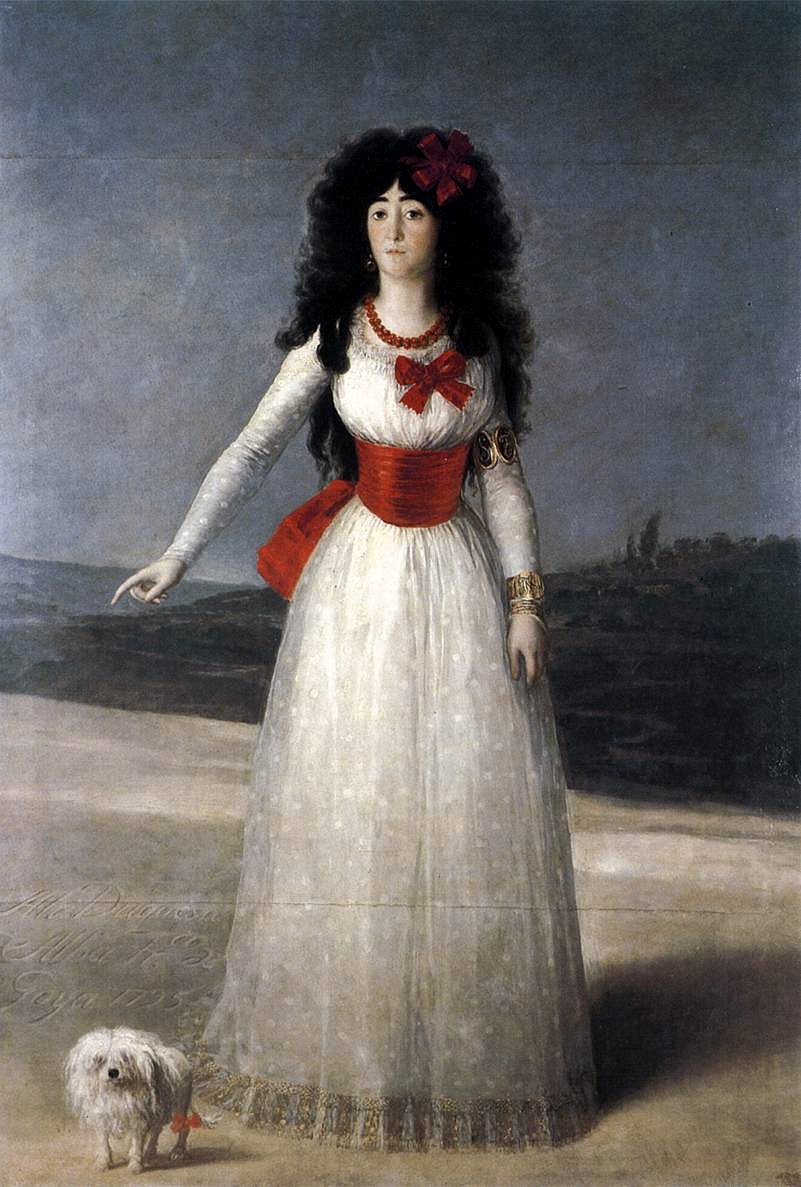
Nacida en Madrid el 10 de junio de 1762, era hija de Francisco de Paula de Silva y lvarez de Toledo, decimotercer duque de Huescar, y de Mara del Pilar Ana de Silva y Sarmiento de Sotomayor, descendiente del conde de Salvatierra y octava marquesa de Santa Cruz. Cayetana pas los primeros aos de su vida en el viejo palacio de la Casa de Alba, en el centro de Madrid.
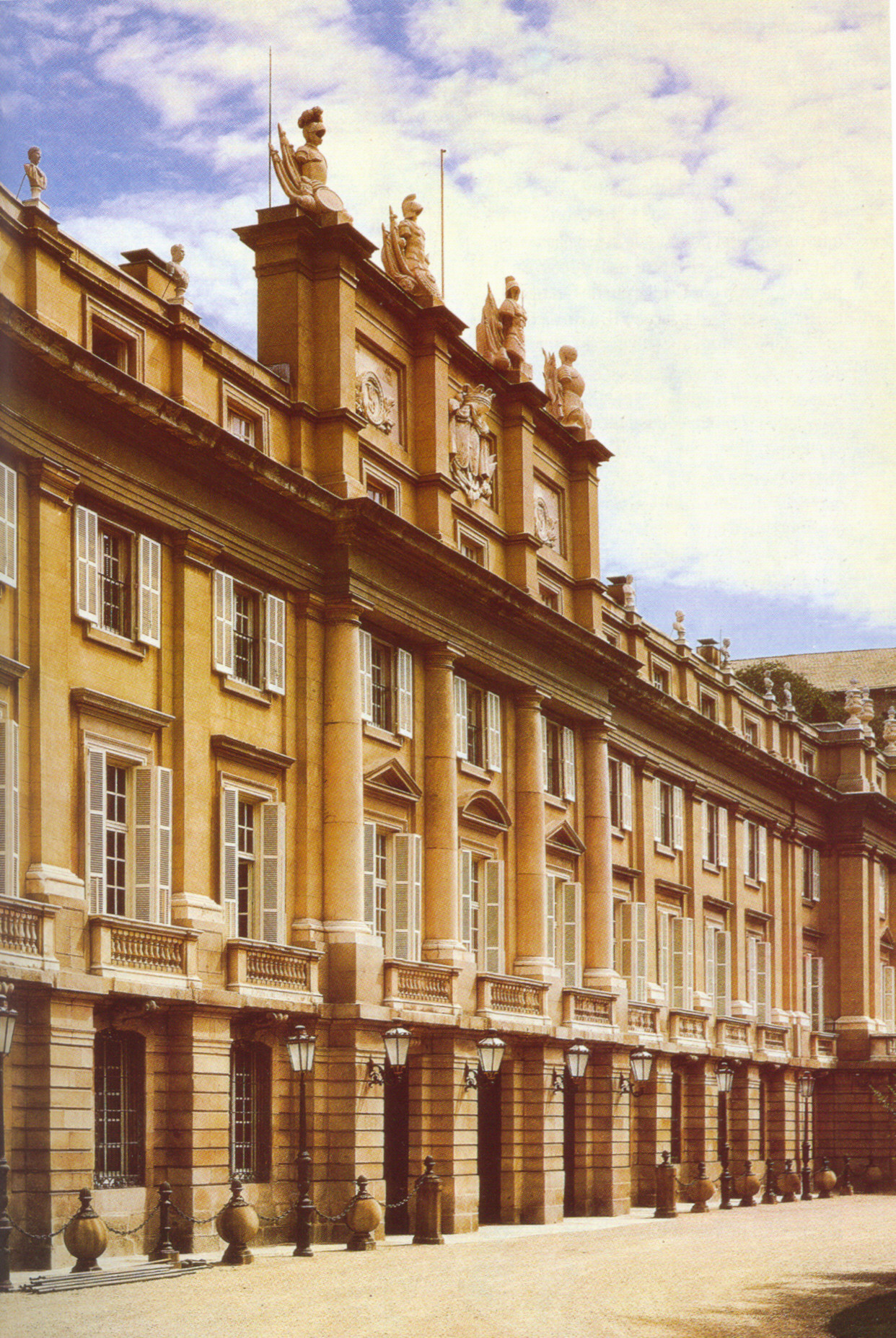
En 1770 falleci su padre, por lo que Cayetana se convirti en la nica heredera de su anciano abuelo Fernando de Silva y lvarez de Toledo, duodcimo duque de Alba. En 1775, Fernando de Silva concert el matrimonio de Mara del Pilar Teresa Cayetana con Jos Mara lvarez de Toledo y Gonzaga y Prez de Guzmn, 16 duque de Medina Sidonia y primo de Cayetana. Algunos estudios mantienen que esta eleccin respondi al deseo del anciano Fernando de Silva de restaurar el apellido lvarez de Toledo en el ducado de Alba. Aunque el matrimonio se celebr, no pudo consumarse hasta un tiempo despus, ya que Cayetana, con doce aos de edad, no haba tenido an su primera menstruacin.
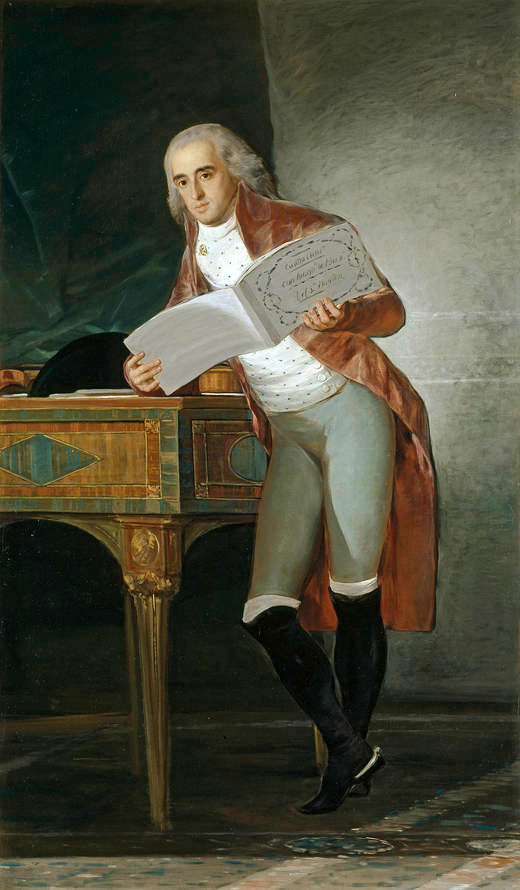
Cayetana no era feliz junto a su esposo y volvi a sus tradicionales escapadas por las calles de Madrid; segn se cuenta, se disfrazaba de maja y tomaba parte en las fiestas populares. Por estas fechas, la joven esposa comenz a organizar una serie de grandes festejos en su palacio a los que invitaba al pueblo llano, lo que caus gran escndalo entre la aristocracia espaola, poco inclinada a mezclarse con el pueblo.
Tras la muerte de su abuelo en 1776, Cayetana se convirti, a sus quince aos, en la decimotercera duquesa de Alba; era la segunda mujer que heredaba el Ducado por derecho propio. Cayetana hered adems de su abuelo ms de veinte ttulos y cinco grandezas de Espaa, con el correspondiente patrimonio que incluan, a los que aadi los inmensos estados de la Casa de Oropesa, heredada de su abuela paterna. Pronto se convirti en uno de los personajes ms importantes e influyentes de la Corte.
Entretanto, su madre se haba vuelto a casar con el duque italiano Joaqun Pignatelli, que tena hijos de un matrimonio anterior. Uno de ellos, Juan Pignatelli, se convirti en el gran amor de la joven duquesa de Alba. Con su relacin con Juan Pignatelli (que supuso otro escndalo para la aristocracia espaola), la duquesa de Alba se gan la enemistad de la princesa de Asturias, Mara Luisa, que tambin pretenda los favores de Pignatelli. Desde este momento, la rivalidad entre ambas damas se convirti en una constante de sus vidas, destinada a perdurar incluso despus de perder el inters por Pignatelli.
As, Cayetana conspir contra Manuel de Godoy cuando ste se convirti en el supuesto nuevo amante de la ya entonces reina. Cierto es que tras esta animadversin personal entre la soberana y la duquesa de Alba se encierra la verdad histrica del resentimiento de la alta nobleza frente al favoritismo del que era objeto Godoy, a quien la nobleza consideraba un advenedizo que deba su posicin a la debilidad del monarca, Carlos IV, y a los favores de la reina. Teresa Cayetana mantuvo tambin una profunda enemistad con la duquesa de Osuna, en este caso ms por celos que por razones polticas.
Una conocida ancdota ilustra la profunda animadversin entre la princesa de Asturias y la duquesa de Alba. En cierta ocasin la princesa Mara Luisa regal una fabulosa cajita de oro y diamantes a Juan Pignatelli, quien, a su vez, la regal a la duquesa de Alba. La duquesa le compens con el regalo de una valiosa sortija que Pignatelli regal tambin a la princesa. Mara Luisa, consciente de la procedencia de la sortija, la luci en un besamanos al que asisti Cayetana, que no tuvo ms remedio que besar la sortija. Humillada, la duquesa de Alba prepar su venganza; enterada igualmente de la procedencia de la cajita de oro, se la regal a los cortesanos de Mara Luisa, que mont en clera. Poco despus, Mara Luisa recibi de la reina de Francia una lujosa cadena de oro que luci en una cena de palacio a la que la duquesa estaba invitada; tal cadena despert una gran admiracin en la Corte. Cayetana orden que se hicieran un centenar de copias que reparti entre la servidumbre de la reina. Tras semejante intercambio de afrentas, la princesa presion a su esposo para que enviase a Juan Pignatelli a la embajada en Pars
Cayetana, cansada de las intrigas de la Corte, abandon Madrid y fij su residencia entre el palacio abulense de Piedrahita y el gaditano de Sanlcar de Barrameda. Fue en esta poca cuando apareci la figura de Francisco de Goya en la vida de la duquesa. Aqu la historia se confunde ms que nunca con la leyenda. Al parecer, Goya conoci a la duquesa de Alba hacia 1790, cuando, de la mano de la duquesa de Osuna, el pintor aragons ingres en los crculos aristocrticos de la Corte madrilea. Cinco aos ms tarde, Goya realiz un retrato de la duquesa y otro de su esposo.
La historia que identifica a las majas de los dos cuadros de Goya (La maja vestida y La maja desnuda) con la duquesa de Alba se fundamenta en la conocida relacin entre el pintor y la duquesa y en el hecho de que, cuando se supone que se pintaron estos cuadros, ambos se encontraban juntos en Sanlcar de Barrameda, adonde haban ido tras la muerte del marido de la duquesa, el 9 de junio de 1796. Se ignora la fecha exacta en la que Goya pint La maja desnuda, pero se sabe que fue antes de 1800, ya que en esa fecha la obra se encontraba en el gabinete de Godoy. Dada la enemistad entre la duquesa y Godoy, es difcil explicar cmo el cuadro acab en su gabinete si la retratada fuera la duquesa, a no ser que se d crdito a otra leyenda, an ms improbable, que convierte a Cayetana y a Godoy en amantes. Todo parece indicar que fue el propio Godoy quien encarg a Goya La maja desnuda, mxime si se tiene en cuenta la aficin del ministro por los cuadros de esta temtica.

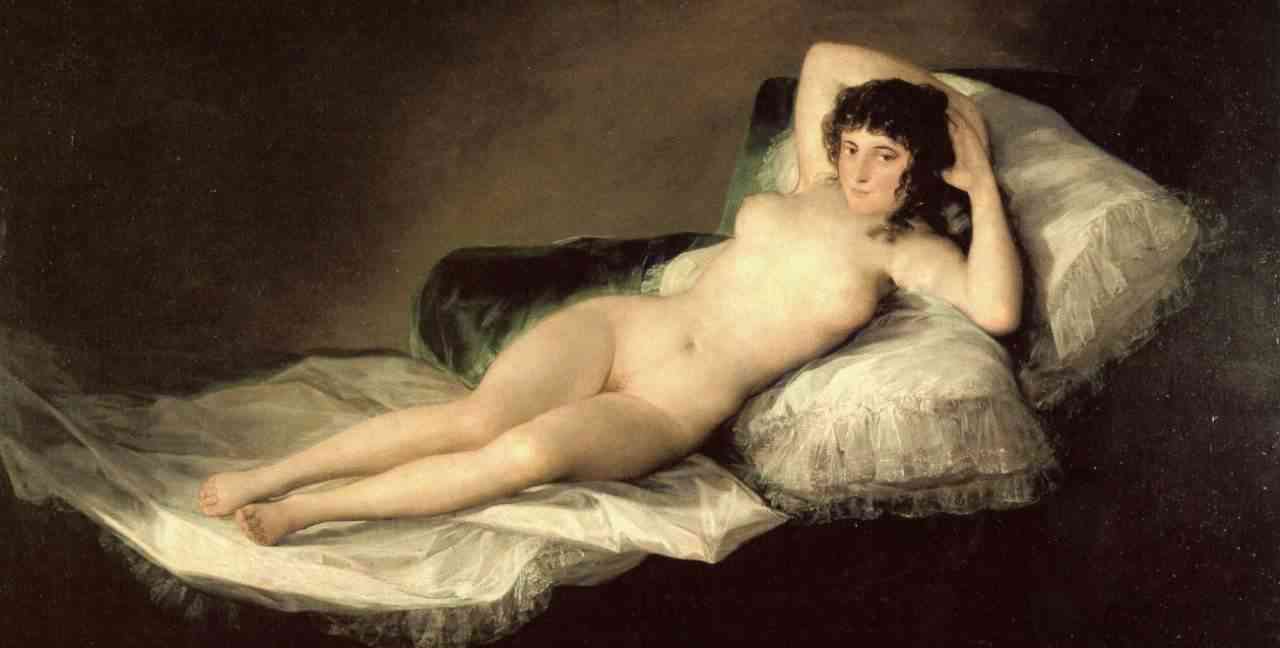
Con todo, el cuadro sigue teniendo algo de enigmtico. No hay duda de que el rostro no se corresponde con el de la duquesa (es un rostro idealizado que no corresponde a nadie concreto), pero el cuerpo si podra ser el de Cayetana, segn se comprob en 1945, cuando el duque de Alba exhum los restos de su antepasada para tratar de restar crdito a la leyenda de la maja. La exhumacin mostr un hecho tambin misterioso: al cadver le faltaba un pie. Extraamente, cuando se exhum el cadver de Goya, se hall que le faltaba la cabeza.
Son muchos los aspectos de la vida de la duquesa de Alba envueltos en la leyenda y el misterio; ni siquiera son claras las causas de su prematuro fallecimiento: envenenamiento, suicidio o fiebres son algunas diversas hiptesis que se han manejado. Tras su muerte sin descendencia, la casa de Alba transmiti sus derechos sucesorios a los Fitz-James Stuart, duques de Berwick, y sigui acumulando junto con los ttulos nobiliarios uno de los mayores patrimonios de Espaa.

*******************************************************************************
( Maria del Pilar Teresa Cayetana of Silva and lvarez of Toledo, 13 duchess of Alba; Madrid, 1762 - 1802) Noble Spanish woman. Granddaughter of the twelfth duke of Alba, Fernando of Forest and lvarez of Toledo, inherited the ownership of Alba's Duchy in 1776, date of the death of his grandfather, and was one of the richest women of his time and one of the aristocrats with more titles of the world. His life, wrapped in legends that continue being a motive of discussion, made a fuss to the aristocracy of the epoch and was a source of inspiration for artists; of fact, the thirteenth duchess of Alba is particularly remembered by the stormy relations that it supported with the painter Francisco of Goya, that it portrayed her in several occasions.
Born in Madrid on June 10, 1762, it was daughter of Francisco de Paula of Forest and lvarez of Toledo, decimotercer duke of Huescar, and of Maria del Pilar Ana of Forest and Vineshoot of Sotomayor, descendant of the count of Salvatierra and eighth marquise of Santa Cruz. Cayetana happened the first years of his life in the old palace of Alba's House, in the center of Madrid.
In 1770 his father died, for what Cayetana turned into the only inheritor of his elderly grandfather Fernando of Forest and lvarez of Toledo, twelfth duke of Alba. In 1775, Fernando of Forest coordinated Maria del Pilar's Teresa marriage Cayetana with Jose Maria lvarez of Toledo and Gonzaga and Perez de Guzmn, 16 duke of Medina Sidonia and cousin of Cayetana. Some studies support that this choice answered to the desire of the elder Fernando of Forest to restore the surname lvarez of Toledo in Alba's duchy. Though the marriage was celebrated, it could not consumarse up to a time later, since Cayetana, with twelve years of age, had not had still his first menstruation.
Cayetana was not happy together with his husband and it returned to his traditional elopements for the streets of Madrid; as one counts, it was disguising itself as beauty and was taking part in the popular holidays. In these dates, the young woman handcuffs it began to organize a series of big feasts in his palace to which he was inviting the ordinary people, which caused great scandal between the Spanish aristocracy, little inclined to be mixed by the people.
After the death of his grandfather in 1776, Cayetana turned, at his fifteen years, into the thirteenth duchess of Alba; she was the second woman who was inheriting the Duchy for own right. Cayetana inherited besides his grandfather more than twenty titles and five greatness of Spain, with the corresponding heritage that they were including, to that it added the immense conditions of Oropesa's House, inherited from his paternal grandmother. Soon it turned into one of the most important and influential prominent figures of the Court.
Meanwhile, his mother had returned to marry the Italian count Joaqun Pignatelli, who had children of a previous marriage. One of them, Juan Pignatelli, turned into the great love of the young woman duchess of Alba. With his relation with Juan Pignatelli (who supposed another scandal for the Spanish aristocracy), the duchess of Alba gained herself the hatred of the princess of Asturias, Maria Luisa, who also was claiming Pignatelli's favors. From this moment, the rivalry between both ladies turned into a constant of his lives, destined to last even after losing the interest for Pignatelli.
This way, Cayetana conspired against Manuel de Godoy when this one lover of the queen already at the time turned into the new supposition. Certain it is that after this personal ill-will between the sovereign one and the duchess of Alba there shuts in itself the historical truth of the resentment of the high nobility opposite to the favouritism of the one that was an object Godoy, whom the nobility was considering to be an upstart who owed his position to the weakness of the monarch, Carlos IV, and to the favors of the queen. Teresa Cayetana supported also a deep hatred with the duchess of Osuna, in this case more for jealousies than for political reasons.
A known anecdote illustrates the deep ill-will between the princess of Asturias and the duchess of Alba. In certain occasion the princess Maria Luisa gave a fabulous cajita of gold and diamonds to Juan Pignatelli, who, in turn, gave her to the duchess of Alba. The duchess compensated him with the gift of a valuable ring that Pignatelli gave also to the princess. Maria Luisa, conscious of the origin of the ring, her shone in a levee to the one that represented Cayetana, which did not have any more remedy that to kiss the ring. Humiliated, the duchess of Alba prepared his revenge; informed equally about the origin of the golden cajita, she was given to the courtiers of Maria Luisa, who mounted in rage.
. Little later, Maria Luisa received of the queen of France a luxurious chain of gold that shone in a dinner of palace to which the duchess was invited; such a chain woke a great admiration up in the Court. Cayetana ordered that there should do a hundred of copies that it distributed between the servitude of the queen. After similar exchange of affronts, the princess pressed his husband in order that he was sending Juan Pignatelli to the embassy in Paris.
Cayetana tired of the intrigues of the Court, left Madrid and there fixed his residence between the palace native of Avila of Piedrahita and the native of Cadiz of Sanlcar de Barrameda. It was in this epoch when Francisco's figure of Goya appeared in the life of the duchess. Here the history gets confused more than never with the legend. Apparently, Goya knew the duchess of Alba about 1790, when, of the hand of the duchess of Osuna, the Aragonese painter joined the aristocratic circles of the Court of Madrid. Five years later, Goya realized a portrait of the duchess and other one of his husband.
The history that identifies the beauties of both pictures of Goya (The dressed beauty and The beauty undresses) with the duchess of Alba is based on the known relation between the painter and the duchess and on the fact that, when it is supposed that these pictures made up, both were united in Sanlcar de Barrameda, to where they had gone after the death of the husband of the duchess, on June 9, 1796. It is ignored the exact date in which Goya painted The nake beauty, but it is known that it was before 1800, since in this date the work was in Godoy's office. . Given the hatred between the duchess and Godoy, is difficult to explain how the picture finished in his office if the portrayed one was the duchess, unless credit gives itself to another legend, furthermore improbably, that turns Cayetana and Godoy into lovers. Everything seems to indicate that it was the own Godoy who The nake beauty entrusted Goya, especially if the interest of the secretary is born in mind by the pictures of this subject matter.
With everything, the picture continues having something of enigmatically. There is no doubt that the face does not correspond with that of the duchess (it is an idealized face that does not correspond to concrete anybody), but the body if it might be that of Cayetana, as it was verified in 1945, when the duke of Alba exhumed the remains of his before last one to try to reduce credit to the legend of the beauty. The exhumation showed a fact also mysteriously: to the corpse he was lacking a foot. Strangly, when the corpse of Goya was exhumed, one found that he was lacking the head.
There are great the aspects of the life of the duchess of Alba wrapped in the legend and the mystery; there are not even clear the reasons of his premature death: poisoning, suicide or fevers are some diverse hypotheses that they have handled. After his death without descent, Alba's house there transmitted his death duties to the Fitz-woman's faces Stuart, dukes of Berwick, and continued accumulating together with the pertaining to nobility titles one of the major heritages of Spain.
A mi querida hija Cayetana.
To my dear daughter Cayetana.
Mara Josefa Alonso de la Soledad Pimentel y Tllez-Girn , XII duquesa de Benavente (Madrid, 26 de noviembre de 1750 ibdem, 5 de octubre de 1834), fue una una aristcrata espaola, duquesa de Osuna consorte y mecenas de artistas, escritores y cientficos. Era hija de Francisco Alfonso Pimentel y Borja y de Mara Faustina Tllez-Girn y Prez de Guzmn.
Por nacimiento era condesa-duquesa de Benavente y se cas con Pedro de Alcntara Tllez-Girn y Pacheco IX duque de Osuna en 1771. El matrimonio tuvo muchos hijos.
De acuerdo con las fuentes contemporneas, la duquesa era una mujer de aguda inteligencia, belleza, elegancia y compostura, que interpret un importante papel en la sociedad espaola de la poca y realiz numerosas obras de caridad.
La duquesa mantuvo uno de los salones literarios ms importantes de Madrid, convirtindose en la personificacin de los aristcratas ilustrados del siglo XVIII tardo. En este sentido, fue una de las dos primeras mujeres en ingresar en la Real Sociedad Econmica Matritense. Ante la polmica levantada por la admisin de mujeres, se form en la Matritense una Junta de Damas de Honor y Mrito (1787), de la que la condesa de Benavente y duquesa de Osuna fue nombrada presidenta.
En ella y en su marido, el pintor Francisco Jos de Goya y Lucientes encontr unos apoyos fiables que se distinguan por un avanzado gusto artstico. La duquesa no slo adquiri una de las primeras ediciones de Los caprichos sino que probablemente encarg dos series de cuadros de gabinete a Goya, entre ellas El aquelarre (1798) (Museo Lzaro Galdiano de Madrid).
En el famoso retrato ejecutado por Goya, la duquesa aparece de pie con actitud de noble reserva, volvindose hacia el espectador. Sus vestiduras siguen la moda iniciada por la reina Mara Antonieta en Pars en aquella poca.
En otro famoso cuadro de Goya, la familia ducal aparece retratada. En un cuadro de gran formato, Goya tuvo xito en percibir el alma de sus modelos con gran habilidad y sabidura. En el sereno grupo, Goya supo captar la bonhoma del duque, la inteligencia de la duquesa y la sutilmente diferenciada inocencia de sus cuatro hijos.
Fue la creadora del que hoy es el madrileo Parque de El Capricho, un deseo personal para su villa de recreo que hoy constituye uno de los ms ricos patrimonios de la villa de Madrid.
-----------------------------------------------------------------------------
Maria Josefa Alonso de la Soledad Pimentel and Tllez-Girn, the XIIth duchess of Benavente (Madrid, on November 26, 1750 - ibdem, on October 5, 1834), was one a Spanish aristocrat, duchess of Osuna colitigant and patron of artists, writers and scientists. She was a daughter of Francisco Alfonso Pimentel y Borja and of Maria Faustina Tllez-Girn and Perez de Guzmn.
For birth she was a countess - duchess of Benavente and duke of Osuna married Pedro de Alcntara Tllez-Girn and Pacheco IX in 1771. The marriage had many children.
In agreement with the contemporary sources, the duchess was a woman of sharp intelligence, beauty, elegance and composure, who interpreted an important paper in the Spanish company of the epoch and realized numerous works of charity
The duchess supported one of the most important literary lounges of Madrid, turning into the personification of the illustrated aristocrats of the late 18th century. In this respect, she was one of the first two women in joining the Royal Economic Madrid Company. Before the polemic raised by the women's admission, there was formed in the Madrid one a Bridesmaids' Meeting and Merit (1787), of that the countess of Benavente and duchess of Osuna was nominated a chairwoman.
In her and in his husband, the painter Francisco Jose of Goya and Bright he found a few trustworthy supports that were differing for an advanced artistic taste. The duchess not only acquired one of the first editions of The caprices but probably he entrusted two series of pictures of office to Goya, between them The witches' sabbath (1798) (Museum Lzaro Galdiano of Madrid).
In the famous portrait executed by Goya, the duchess appears of foot with noble's attitude reservation, turning towards the spectator. His vestments follow the mode initiated by the queen Maria Antonieta in Paris in that epoch.
In another famous picture of Goya, the ducal family turns out to be portrayed. In a picture of great format, Goya was successful in perceiving the soul of his models with great skill and wisdom. In the serene group, Goya could catch the bonhomie of the duke, the intelligence of the duchess and the finely differentiated innocence of his four children.
It was the creative one of the one that today is the Park of Madrid of The Caprice, a personal desire for his villa of playtime that today constitutes one of the richest heritages of the villa of Madrid.
********************************************************************************************
Ttulos / Titles
Por derecho propio / For own rightPor matrimonio / By Marriage
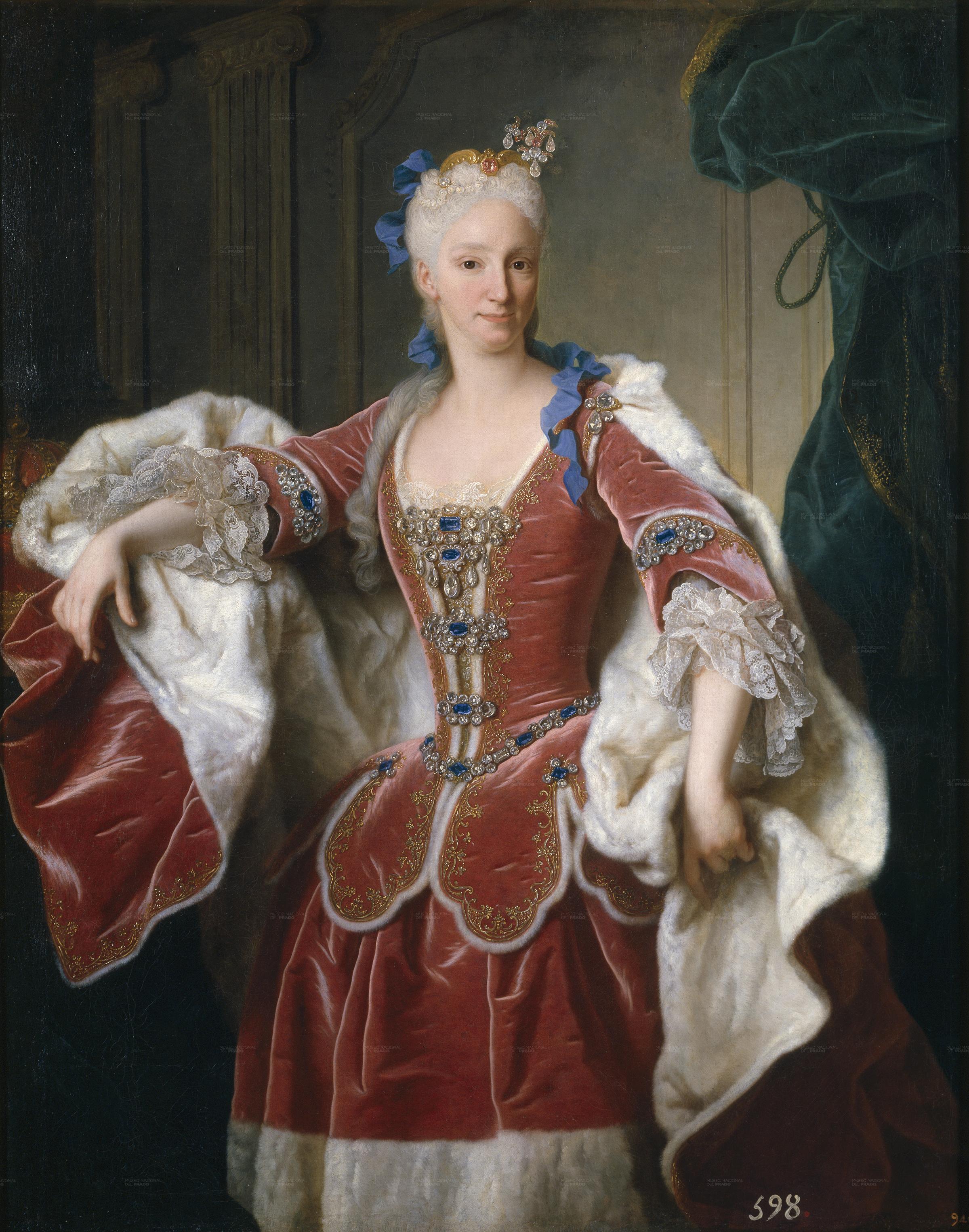 MatrimonioSe cas en 1714 con el rey viudo de Espaa, Felipe V, gracias a las buenas gestiones del obispo y cardenal italiano de Mlaga, Julio Alberoni, al que ascendi a primer ministro a su llegada a la corte. Mujer de gran belleza, pese a las marcas que tena en su cara, fruto de unas viruelas infantiles, posea un cuerpo esbelto y atractivo, al tiempo que era acreedora de un fuerte carcter y una personalidad autoritaria que le otorg una gran influencia en la corte de la poca. En su cada vez ms continuado aislamiento personal, Felipe V reduca su crculo personal, lo que convirti a la reina Isabel en una pieza fundamental en la poltica del momento. Mientras el monarca caa en depresiones que lo suman en una melancola y desconsuelo cada vez ms intensos, con un abandono cada vez ms prolongado de su higiene personal en esos periodos, Isabel utilizaba todas sus influencias en pos de sus ambiciones personales para colocar a sus amados hijos en los tronos de Europa.
MatrimonioSe cas en 1714 con el rey viudo de Espaa, Felipe V, gracias a las buenas gestiones del obispo y cardenal italiano de Mlaga, Julio Alberoni, al que ascendi a primer ministro a su llegada a la corte. Mujer de gran belleza, pese a las marcas que tena en su cara, fruto de unas viruelas infantiles, posea un cuerpo esbelto y atractivo, al tiempo que era acreedora de un fuerte carcter y una personalidad autoritaria que le otorg una gran influencia en la corte de la poca. En su cada vez ms continuado aislamiento personal, Felipe V reduca su crculo personal, lo que convirti a la reina Isabel en una pieza fundamental en la poltica del momento. Mientras el monarca caa en depresiones que lo suman en una melancola y desconsuelo cada vez ms intensos, con un abandono cada vez ms prolongado de su higiene personal en esos periodos, Isabel utilizaba todas sus influencias en pos de sus ambiciones personales para colocar a sus amados hijos en los tronos de Europa. 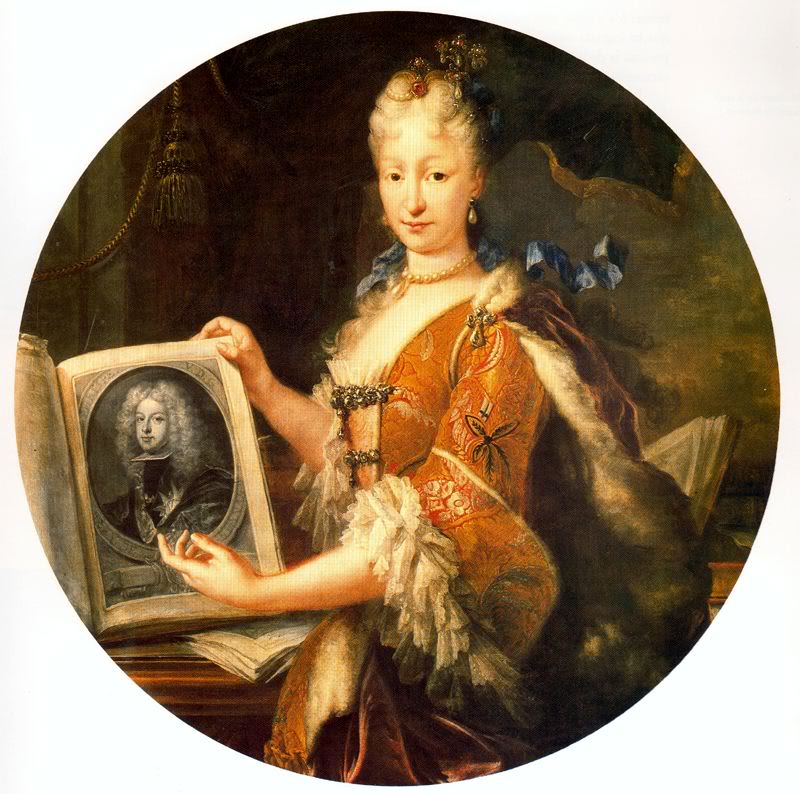 Vida pblicaFue apodada despectivamente "la parmesana". Julio Alberoni la describi as a su llegada a Madrid: "Se trata de una buena muchacha de veintids aos, fecha, insignificante, que se atiborra de mantequilla y de queso parmesano y que jams ha odo hablar de nada que no sea coser o bordar". De todas formas, en su reinado como esposa de Felipe V form una importante coleccin de arte; cada cnyuge marcaba sus cuadros con un smbolo dinstico diferenciado (la flor de lis y un aspa) y la reina se aficion especialmente a los cuadros de Murillo, que compr en gran nmero. Tambin fue esta real pareja la responsable de la compra de la coleccin escultrica de Cristina de Suecia, que incluye el Grupo de San Ildefonso y las ocho "Musas" (todos ellos expuestos ahora en el Museo del Prado).La reina nunca mostr afecto, sino desdn, por sus hijastros. Para ella, los descendientes del primer matrimonio del rey con Mara Luisa Gabriela de Saboya constituan un escollo ms para lograr su principal objetivo: dotar a sus hijos Carlos (futuro Carlos III) y Felipe de un reino donde gobernar. Mientras Felipe V vivi, la relacin entre Isabel y sus hijastros (sobre todo con el infante Fernando) se caracteriz por una continua ignorancia mutua, en base a una aparente cordialidad. Isabel tampoco se revel como una madre amorosa con los seis hijos que tuvo, ya que consumi todo su tiempo y energas a las intrigas polticas para, precisamente, forjarles ese brillante porvenir que tanto ansiaba para ellos.Su poltica estuvo orientada a recuperar para la monarqua espaola los territorios italianos perdidos por el tratado de Utrecht. As, consigui para su hijo Carlos (futuro Carlos III) el reino de Npoles y Sicilia adems de dotar a su otro hijo, Felipe, del ducado de Parma. Cuando qued viuda, su hijastro, Fernando VI de Espaa, la desterr al Real Sitio de la Granja de San Ildefonso en Segovia, aunque ella se construy otra residencia cerca, el Palacio Real de Riofro. En esos aos de destierro, Isabel de Farnesio vivi dedicada a su vida personal, pero siempre atenta a la evolucin del reinado de su hijastro, sobre todo atenta a la salud y vida privada de Fernando VI, especialmente tras la muerte de su esposa, Brbara de Braganza. Al morir aquel sin descendencia en 1759 (despus de caer en un perodo de depresiones cercanas a la demencia), lo que propici la subida al trono de su hijo Carlos, volvi a la corte, pero las continuas peleas y discusiones con su nuera, Mara Amalia de Sajonia, la hicieron volver a su exilio hasta el fin de sus das en la localidad madrilea de Aranjuez (Madrid).
Vida pblicaFue apodada despectivamente "la parmesana". Julio Alberoni la describi as a su llegada a Madrid: "Se trata de una buena muchacha de veintids aos, fecha, insignificante, que se atiborra de mantequilla y de queso parmesano y que jams ha odo hablar de nada que no sea coser o bordar". De todas formas, en su reinado como esposa de Felipe V form una importante coleccin de arte; cada cnyuge marcaba sus cuadros con un smbolo dinstico diferenciado (la flor de lis y un aspa) y la reina se aficion especialmente a los cuadros de Murillo, que compr en gran nmero. Tambin fue esta real pareja la responsable de la compra de la coleccin escultrica de Cristina de Suecia, que incluye el Grupo de San Ildefonso y las ocho "Musas" (todos ellos expuestos ahora en el Museo del Prado).La reina nunca mostr afecto, sino desdn, por sus hijastros. Para ella, los descendientes del primer matrimonio del rey con Mara Luisa Gabriela de Saboya constituan un escollo ms para lograr su principal objetivo: dotar a sus hijos Carlos (futuro Carlos III) y Felipe de un reino donde gobernar. Mientras Felipe V vivi, la relacin entre Isabel y sus hijastros (sobre todo con el infante Fernando) se caracteriz por una continua ignorancia mutua, en base a una aparente cordialidad. Isabel tampoco se revel como una madre amorosa con los seis hijos que tuvo, ya que consumi todo su tiempo y energas a las intrigas polticas para, precisamente, forjarles ese brillante porvenir que tanto ansiaba para ellos.Su poltica estuvo orientada a recuperar para la monarqua espaola los territorios italianos perdidos por el tratado de Utrecht. As, consigui para su hijo Carlos (futuro Carlos III) el reino de Npoles y Sicilia adems de dotar a su otro hijo, Felipe, del ducado de Parma. Cuando qued viuda, su hijastro, Fernando VI de Espaa, la desterr al Real Sitio de la Granja de San Ildefonso en Segovia, aunque ella se construy otra residencia cerca, el Palacio Real de Riofro. En esos aos de destierro, Isabel de Farnesio vivi dedicada a su vida personal, pero siempre atenta a la evolucin del reinado de su hijastro, sobre todo atenta a la salud y vida privada de Fernando VI, especialmente tras la muerte de su esposa, Brbara de Braganza. Al morir aquel sin descendencia en 1759 (despus de caer en un perodo de depresiones cercanas a la demencia), lo que propici la subida al trono de su hijo Carlos, volvi a la corte, pero las continuas peleas y discusiones con su nuera, Mara Amalia de Sajonia, la hicieron volver a su exilio hasta el fin de sus das en la localidad madrilea de Aranjuez (Madrid).  DescendenciaDe su matrimonio con el rey Felipe V tuvo siete hijos:-Carlos III (1716 1788), rey de Espaa y de las Dos Sicilias.- Francisco (1717).- Mariana Victoria (1718 1781), reina de Portugal, esposa de Jos I.- Felipe (1720 1765), duque de Parma.-Mara Teresa (1726 1746), esposa de Luis, Delfn de Francia (hijo del rey Luis XV).- Luis Antonio (17271785), arzobispo de Toledo y cardenal, desde 1735 hasta 1754. Abandon la vida eclesistica.-Mara Antonia (1729 1785). Esposa de Vctor Amadeo III de Cerdea.FallecimientoEn 1766 muere Isabel, siendo enterrada junto a los restos de su difunto marido Felipe V en el Palacio Real de la Granja de San Ildefonso, concretamente en un mausoleo emplazado en la Real Colegiata de la Santsima Trinidad, en la llamada Sala de las Reliquias, templo inserto en el propio palacio, ubicado en la localidad de La Granja de San Ildefonso (provincia de Segovia), a escasos kilmetros de Segovia.
DescendenciaDe su matrimonio con el rey Felipe V tuvo siete hijos:-Carlos III (1716 1788), rey de Espaa y de las Dos Sicilias.- Francisco (1717).- Mariana Victoria (1718 1781), reina de Portugal, esposa de Jos I.- Felipe (1720 1765), duque de Parma.-Mara Teresa (1726 1746), esposa de Luis, Delfn de Francia (hijo del rey Luis XV).- Luis Antonio (17271785), arzobispo de Toledo y cardenal, desde 1735 hasta 1754. Abandon la vida eclesistica.-Mara Antonia (1729 1785). Esposa de Vctor Amadeo III de Cerdea.FallecimientoEn 1766 muere Isabel, siendo enterrada junto a los restos de su difunto marido Felipe V en el Palacio Real de la Granja de San Ildefonso, concretamente en un mausoleo emplazado en la Real Colegiata de la Santsima Trinidad, en la llamada Sala de las Reliquias, templo inserto en el propio palacio, ubicado en la localidad de La Granja de San Ildefonso (provincia de Segovia), a escasos kilmetros de Segovia. 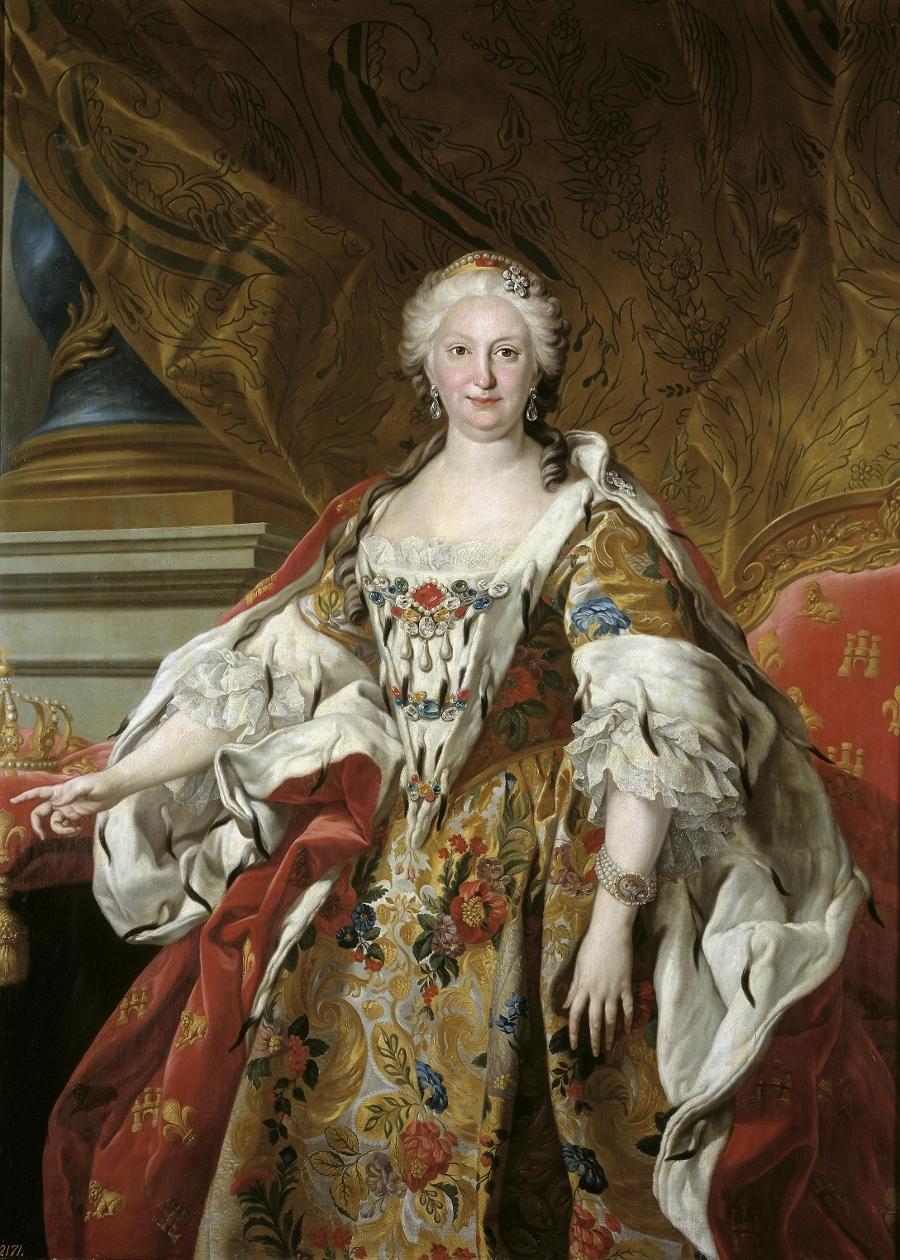 ------------------------------------------------------------------Isabel de Farnesio was born in the Italian city of Parma, as the second daughter of the Prince Inheritor of Parma, Eduardo II Farnesio, and of Sofa Dorotea of Bavaria-Neoburgo.The successive deaths of his major brother, Alejandro Ignacio (August 5, 1693) and of his father (September 6, 1693), leave her as the third one in the successor line of the duchy of Parma, preceded only by his two uncles, Francisco (who would turn into his stepfather into 1696) and Antonio Farnesio, that they would reign in the duchy of Parma one after other one, dying without any descent. This was turning Isabel in only and inheritor of the conditions legitimizes both of the Farnesio and of the Mdicis (route his paternal great-grandmother, Margarita de Mdicis), as soon as this family went out in 1743.There married in 1714 the king widower of Spain, Philip V, thanks to the good negotiations of the bishop and Italian cardinal of Malaga, Julio Alberoni, whom it promoted to prime minister at his arrival to the court. Woman of great beauty, in spite of the brands that it had in his face, fruit of a few infantile smallpox, was possessing a slender and attractive body, at the time that it was creditor of a strong character and an authoritarian personality that granted a great influence to him in the court of the epoch. In his increasingly continued personal isolation, Philip V was reducing his personal circle, which turned the queen Isabel into a fundamental piece into the politics of the moment. While the monarch was falling down in depressions that were plunging it in a melancholy and I distress increasingly intense, with an abandon increasingly longThere was nicknamed contemptuously " the Parmesan one ". Julio Alberoni described it this way at his arrival to Madrid: " it is a question of a twenty-two-year-old good, ugly, insignificant girl, who fills herself of butter and of Parmesan cheese and who has never heard speaking about anything that is not to sew or to embroider ". Of all forms, in his reign like wife of Philip V it formed an important collection of art; every spouse was marking his pictures with a dynastic differentiated symbol (the fleur-de-lis and an arm) and the queen got fond specially of the pictures of Murillo, which he bought in great number. Also there was this royal equal the person in charge of the purchase of Cristina's sculptural collection of Sweden, who includes the Group of San Ildefonso and eight "Muses" (all of them exposed now in the Prado Museum).The queen never proved to be sympathetic, but disdain, for his step-sons. For her, the descendants from the first marriage of the king with Maria Luisa Gabriela of Savoy were constituting one more reef to achieve his principal aim: to endow his children Carlos (future Carlos III) and Philip of a kingdom where to govern. While Philip V lived, the relation between Isabel and his step-sons (especially with the infante Fernando) was characterized by a continuous mutual ignorance, on the basis of an apparent warmth. Isabel was not also revealed as a loving mother by six children that it had, since it consumed all his time and energies to the political intrigues, precisely, they to be forged by this brilliant future for that so much it was longing for them.His politics was orientated to recover for the Spanish monarchy the Italian territories lost by the agreement of Utrecht. This way, it obtained for his son Carlos (future Carlos III) the kingdom of Naples and Sicily beside endowing his another son, Philip, of the duchy of Parma. When she remained a widow, his step-son, Fernando VI of Spain, exiled it to the Royal summer residence of San Ildefonso's Farm in Segovia, though she constructed another residence herself it surrounds, Riofro's Royal palace. In these years of exile, Isabel de Farnesio lived dedicated to his personal life, but always attentive to the evolution of the reign of his step-son, especially it commits an outrage against the health and life deprived of Fernando VI, specially after the death of his wife, Barbara de Braganza. When that one dies without descent in 1759 ( After falling in a period of depressions near to the dementia), which propitiated the raise to the throne of his son Carlos, it returned to the court, but the continuous ones you fight and discussions with his daughter-in-law, Maria Amalia of Saxony, they made it return to his exile up to the end of his days in the locality of Madrid Aranjuez's (Madrid)********************************************************************************En honor a nuestra querida Reina madre, Isabel de Farnesio, de su mas devota admiradora y cortesa:La Duquesa de Huscar.
------------------------------------------------------------------Isabel de Farnesio was born in the Italian city of Parma, as the second daughter of the Prince Inheritor of Parma, Eduardo II Farnesio, and of Sofa Dorotea of Bavaria-Neoburgo.The successive deaths of his major brother, Alejandro Ignacio (August 5, 1693) and of his father (September 6, 1693), leave her as the third one in the successor line of the duchy of Parma, preceded only by his two uncles, Francisco (who would turn into his stepfather into 1696) and Antonio Farnesio, that they would reign in the duchy of Parma one after other one, dying without any descent. This was turning Isabel in only and inheritor of the conditions legitimizes both of the Farnesio and of the Mdicis (route his paternal great-grandmother, Margarita de Mdicis), as soon as this family went out in 1743.There married in 1714 the king widower of Spain, Philip V, thanks to the good negotiations of the bishop and Italian cardinal of Malaga, Julio Alberoni, whom it promoted to prime minister at his arrival to the court. Woman of great beauty, in spite of the brands that it had in his face, fruit of a few infantile smallpox, was possessing a slender and attractive body, at the time that it was creditor of a strong character and an authoritarian personality that granted a great influence to him in the court of the epoch. In his increasingly continued personal isolation, Philip V was reducing his personal circle, which turned the queen Isabel into a fundamental piece into the politics of the moment. While the monarch was falling down in depressions that were plunging it in a melancholy and I distress increasingly intense, with an abandon increasingly longThere was nicknamed contemptuously " the Parmesan one ". Julio Alberoni described it this way at his arrival to Madrid: " it is a question of a twenty-two-year-old good, ugly, insignificant girl, who fills herself of butter and of Parmesan cheese and who has never heard speaking about anything that is not to sew or to embroider ". Of all forms, in his reign like wife of Philip V it formed an important collection of art; every spouse was marking his pictures with a dynastic differentiated symbol (the fleur-de-lis and an arm) and the queen got fond specially of the pictures of Murillo, which he bought in great number. Also there was this royal equal the person in charge of the purchase of Cristina's sculptural collection of Sweden, who includes the Group of San Ildefonso and eight "Muses" (all of them exposed now in the Prado Museum).The queen never proved to be sympathetic, but disdain, for his step-sons. For her, the descendants from the first marriage of the king with Maria Luisa Gabriela of Savoy were constituting one more reef to achieve his principal aim: to endow his children Carlos (future Carlos III) and Philip of a kingdom where to govern. While Philip V lived, the relation between Isabel and his step-sons (especially with the infante Fernando) was characterized by a continuous mutual ignorance, on the basis of an apparent warmth. Isabel was not also revealed as a loving mother by six children that it had, since it consumed all his time and energies to the political intrigues, precisely, they to be forged by this brilliant future for that so much it was longing for them.His politics was orientated to recover for the Spanish monarchy the Italian territories lost by the agreement of Utrecht. This way, it obtained for his son Carlos (future Carlos III) the kingdom of Naples and Sicily beside endowing his another son, Philip, of the duchy of Parma. When she remained a widow, his step-son, Fernando VI of Spain, exiled it to the Royal summer residence of San Ildefonso's Farm in Segovia, though she constructed another residence herself it surrounds, Riofro's Royal palace. In these years of exile, Isabel de Farnesio lived dedicated to his personal life, but always attentive to the evolution of the reign of his step-son, especially it commits an outrage against the health and life deprived of Fernando VI, specially after the death of his wife, Barbara de Braganza. When that one dies without descent in 1759 ( After falling in a period of depressions near to the dementia), which propitiated the raise to the throne of his son Carlos, it returned to the court, but the continuous ones you fight and discussions with his daughter-in-law, Maria Amalia of Saxony, they made it return to his exile up to the end of his days in the locality of Madrid Aranjuez's (Madrid)********************************************************************************En honor a nuestra querida Reina madre, Isabel de Farnesio, de su mas devota admiradora y cortesa:La Duquesa de Huscar.


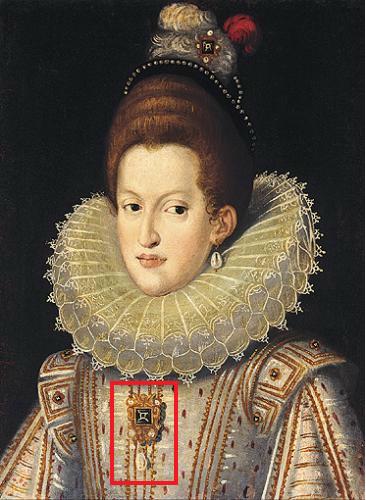 ********************************************************************************
********************************************************************************